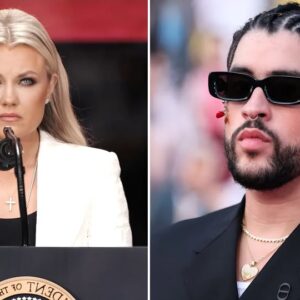President Donald Trump recently dismissed Kim Sajet, the director of the National Portrait Gallery, citing her strong support for diversity, equity, and inclusion (DEI) as the reason for her termination. In a post on his social media platform, Truth Social, Trump announced that Sajet was a “highly partisan person” whose views on DEI were “totally inappropriate” for her position. He stated that her replacement would be announced soon and claimed the decision came “upon the request and recommendation of many people.” This move marks another instance of Trump’s efforts to remove federal officials whose views or actions appear to conflict with his administration’s agenda.
The White House’s statement accompanying the announcement referenced one of the gallery’s portraits of Trump that had drawn attention during Sajet’s tenure. The photo’s caption described Trump’s impeachment trials and his political comeback, noting that he was impeached twice but acquitted both times and later regained the presidency in 2024. The caption also compared him to Grover Cleveland, the only other U.S. president to serve nonconsecutive terms. Critics of Sajet argue that the wording of the caption reflected bias and contradicted her own claims of neutrality in curation. Sajet had previously stated that the gallery avoided editorializing and aimed to base all exhibit information on historical facts rather than curators’ personal opinions.
Sajet’s comments at a November 4 event, the Richardson Symposium: Racial Masquerade in American Art and Culture, were also cited by the Trump administration as evidence of her ideological leanings. In her speech, Sajet acknowledged that much of her professional focus revolved around “identity politics.” She argued that America has long struggled to separate a person’s appearance from their potential, pointing to a historical and ongoing pattern of discrimination and alienation. Her remarks reflected a broader commitment to addressing social and cultural inequities within the art world—a commitment Trump and his allies have publicly criticized as part of what they view as a divisive DEI agenda.
During the same speech, Sajet invoked a historical moment from 1972, when astronaut Jack Schmidt took the famous “Blue Marble” photograph of Earth from space. She described the image as a symbol of unity and shared humanity, lamenting that such a vision feels distant today. Sajet expressed dismay at what she called “the most uncivil, mistrustful, racially insensitive, sexually exploitative, factually untruthful, digitally manipulated, secretive, and inflammatory election of the modern era.” These remarks, though not directly naming Trump, were interpreted by some as an implicit critique of his political movement and leadership style, reinforcing perceptions of her as politically partisan.
Sajet further defended the National Portrait Gallery’s mission as inherently tied to questions of identity and representation. She cited examples of the gallery’s exhibits that addressed race, gender, and social justice, including portraits of figures such as President Eisenhower, Margaret Sanger, and transgender activist Sylvia Rivera. According to Sajet, such work involved both acknowledging controversial historical realities and ensuring diverse perspectives were represented in the nation’s cultural institutions. Her statements underscored her belief that art and history cannot be separated from the social and political contexts in which they exist—an approach that sharply contrasts with Trump’s newly announced federal policy to dismantle DEI initiatives.
Trump’s firing of Sajet came shortly after his administration’s broader actions to remove or replace senior cultural and academic officials. Within the same month, the administration dismissed Shira Perlmutter, the U.S. Register of Copyrights, and Carla Hayden, the Librarian of Congress. Both women were reportedly viewed by the White House as resistant to Trump’s policy priorities. These moves, including the elimination of DEI programs across all federal agencies by executive order, signal a larger reshaping of government leadership under Trump’s second term—one aimed at curbing what he describes as “woke” or ideologically biased influences within public institutions.




